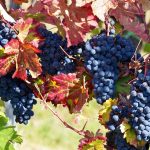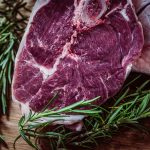Drought saps agricultural confidence

The severe drought across eastern Australia is heavily impacting sentiment in the nation’s ag sector, with the latest Rabobank Rural Confidence Survey finding the lowest farmer confidence levels recorded since the depths of the millennium drought in 2006.
With dry conditions preventing many farmers from capitalising on what remain high prices for most commodities, the overall Australian rural confidence index dropped significantly in the latest quarter, with more than half of those surveyed having a pessimistic view on the 12 months ahead.
However, the current challenges with drought were shown to have done little to dent the resilience of Australian farm businesses, with farmers reporting relatively strong business viability and at levels higher than throughout much of the past decade.
Completed last month, the latest Rural Confidence Survey found 56 per cent of the nation’s farmers now expect conditions in the agricultural economy to deteriorate in the coming 12 months, significantly up from 35 per cent with that expectation in the June quarter.
Those expecting an improvement in conditions declined to 13 per cent (from 18 per cent previously), while 25 per cent expect similar conditions to last year (down from 41 per cent).
Rabobank Australia CEO Peter Knoblanche said farmers across the country were demonstrating exceptional resilience and adaptability to manage their businesses through worsening drought conditions – particularly in Queensland and northern New South Wales which had been plagued by drought for several years.
“Parts of central and western Queensland have been in drought for seven years, with only sporadic short-term relief, while the whole of New South Wales is drought-declared and its reach is spreading into South Australia and Victoria,” he said.
Drought was cited as a key reason conditions were likely to worsen by 89 per cent of survey respondents, up from 75 per cent last quarter. All other factors weighing on short-term confidence paled in comparison, with weaker commodity prices (mainly sugar) and rising input prices cited by 11 per cent and seven per cent, respectively.
Despite heightened drought concerns, Mr Knoblanche said longer-term business outlook remains positive, with 93 per cent of surveyed farming businesses reporting viability – well up on the levels reported through much of the millennium drought.
“The outlook for Australia’s ag sector is fundamentally very sound, with strong commodity prices – particularly for lamb, beef, wool and cotton and, more recently, grain – ensuring the majority remain in overall strong positions,” he said.
“Farmers have managed through droughts before and have put in place the infrastructure and systems to try to mitigate the impact as best they can. That is not to say it isn’t extremely challenging especially in areas where it has been so prolonged.”
On the flipside, Mr Knoblanche said farmers in Western Australia – which had previously experienced dry conditions – as well as parts of South Australia and southern Victoria were enjoying improved seasonal conditions.
“These farm businesses are in the front seat to take advantage of the current situation, with good harvest and price prospects aligning,” he said.
Farm business performance and investment
Despite the drop in overall rural confidence, farmers’ income expectations didn’t fall by the same degree. There was still, however, a significant lowering of income expectations, with 49 per cent of farmers expecting lower incomes over the next 12 months (compared with 33 per cent with that view in the previous quarter).
Those expecting a similar financial result stood at 29 per cent (down from 45 per cent) while 18 per cent expected an improvement (down slightly, from 21 per cent).
It was a different story in Western Australia, with 48 per cent of the state’s farmers expecting an increase in gross farm incomes – underpinned by the bullish sentiment among their grain growers.
Reflecting the current conditions, farmers wound back their investment plans for the next 12 months – after four years of very strong on-farm investment. Of those surveyed, 21 per cent were intending to decrease investment in their farm businesses (compared with 12 per cent last quarter), while those looking to maintain current investment levels fell back to 59 per cent (from 69 per cent). A total of 18 per cent reported an intention to increase investment.
Investment in Tasmania and Western Australia outstripped the other states – with 40 per cent and 32 per cent, respectively, holding expansionary intentions.
State prospects
Rural confidence was down across the country, with Western Australia the only state to buck the downward trend.
Farmers in New South Wales reported the weakest sentiment, with confidence now at its lowest level in the 17-year history of the survey.
“While some regions in the north of New South Wales received some recent rain, it will take much follow-up rainfall to plant a summer crop with confidence and to halt graziers’ feeding regimes,” Mr Knoblanche said.
The drought continued to weigh on farmer sentiment in Queensland, he said, driving a further drop in grain and cotton sector confidence – to around the subdued levels reported in beef. All commodities, however, continued to trail sugar, with confidence among cane growers dropping further as prices hit a new multi-year low.
“In South Australia and Victoria, confidence also took a hit, but there are some regions experiencing reasonable seasonal conditions, while in Tasmania the bulk of farmers expect this year to be similar to the last – which was a positive one for many,” he said.
In contrast, farmer spirits in Western Australia have rebounded, Mr Knoblanche said, with good seasonal conditions and booming commodity prices driving the upswing.
“WA grain growers are potentially shaping up for a highly profitable year, if the season and commodity prices continue to align,” he said.
Sectors
Nationally, confidence was down across all surveyed commodity sectors, with cotton taking the biggest tumble.
“While the price side of the equation is bullish, low water availability is constraining planting at this early stage and this is frustrating for cotton growers as there are plenty of acres ready to plant if they just had the water,” he said.
In sugar, it was a completely different scenario, Mr Knoblanche said, with the season being relatively favourable for crushing, but prices remaining under significant pressure.
“Grain grower confidence is also well back – except in Western Australia – with crops that have been planted now in their critical growth stage and reliant on rain in the next month to get them through,” he said. “Western Australia is expected to do the heavy lifting in grain supply this year, and their wheat potential stands at some 9.5 million tonnes.”
With the interstate movement of grain set to continue into 2019 – providing much-needed feed grain to the east – and grain and fodder prices escalating with the scarcity, confidence was well back in the sheep, beef and dairy sectors.
“Dairy farmers and graziers have already made tough decisions around their feeding regimes during winter, but they will be faced with harder decisions if they don’t get a spring break given the cost and availability of feed,” Mr Knoblanche said. “The strain of feeding livestock is more than outweighing the positive price dynamics – although high wool and lamb prices are seeing graziers try to hold on to more stock than in previous droughts.”
A comprehensive monitor of outlook and sentiment in Australian rural industries, the Rabobank Rural Confidence Survey questions an average of 1000 primary producers across a wide range of commodities and geographical areas throughout Australia on a quarterly basis.
The most robust study of its type in Australia, the survey has been conducted by an independent research organisation interviewing farmers throughout the country each quarter since 2000. The next results are scheduled for release in December 2018.








